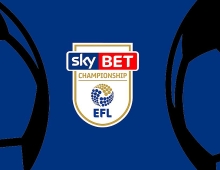
Soccer Statistics – From Expected Goals to Defensive Coverage.
During the previous 30 years, we have witnessed an outbreak of technology in all sciences. The same has happened in soccer statistics. With the development of computers and software, we are able to do so much more and understand the depths of the game. Yes, nowadays, we have software that is able to think on its own, added to a robotic figure, we have received our first robots. Now, imagine such powerful software keeping track of your favourite teams and soccer leagues. The world is changing rapidly. In football, it’s all about soccer statistics nowadays and figuring out different ways to predict how the match is going to be played. And we should always avoid octopuses.
Soccer statistics - what can I excpect?
In football, when we say soccer statistics, we immediately think goals, assists, amazing passes resulting in goal chances, etc. For so long, soccer statistics have been associated with offensive play rather than defensive play. So, you can expect that most stats will usually be offensive oriented. But this doesn’t mean that we should avoid looking at other soccer statistics like completed passes, clearances, clean sheets and so many more. We’ll talk about defensive soccer statistics at the end of the article, for now; let’s go over the more known ones. Overall, stats are important. We have already discussed a lot about using them in soccer betting statistics and various soccer betting systems. Now, let’s step outside of the betting world for a moment and dive into the game and the philosophy behind stats.

Excpected goals
Maybe one of the most talked about soccer statistics is expected goals. It has become a part of Premier League regular stats and is dominating the game. By analysing how many opportunities are created and how many of those goal scoring chances do the players turn into goals, we can calculate the expected goals metric in soccer statistics. This soccer statistic is still not entirely understood by some punters because it is a bit confusing. The expected goals metric has caused quite a bit of turmoil. It has been invented by Opta.
The new metric was obtained by analysis of over 300,000 shots from Premier League. Based on various factors such as the angle of the shot, type of opportunity, distance from goal, etc., they assigned an xG value in percentages to every goal attempt in order to examine how good of a chance it is. In other words, expected goals represent a likelihood of a shot being scored from a particular position on the pitch during a specific phase of the play. The metric shows us how good of a chance it has been.
Quality of a pass and a shot
Think of it this way. A shot taken from outside of the box and from within the box is simply not the same. Also, a header and a footer have different probabilities. Was the pass been sent by Xavi, Pirlo, or by Gattuso? I’m not saying Gattuso is a bad player; he was an amazing defensive midfielder whilst Xavi and Pirlo are magicians. Therefore, a pass sent by Xavi or Pirlo will have a higher percentage of conversion or expected goals.
xG tells us also how the team is performing and will perform. Every one of us has had those hair-pulling moments where our team has had so many chances but simply couldn’t score. And then, the other team scores a lucky goal and wins the game. It is so depressing. But, on the other hand, these lucky occurrences do happen but are not that common. That same team that won that lucky game will lose the other games if they are bad. The expected goals metric is useful when predicting the future of both teams.
Serie A in 2015/2016 season examples
In Serie A 2015/16 Season, Juventus started with 3 wins from the first 10 games. But their expected goals metric has been amazing. They were the best team on the field in each of the games; they simply lacked the finishing luck. So, how did that season end for Juventus? Well only with a 15 in-a-row winning streak and the Serie A Title. Plus, at the end of the season, they had 9 points more than the follow-up team. That is expected goals metric all over the place.
If you saw the Serie A league table in season 2015/16 after the first 10 games, you would see that Juventus was at 12th position at the league table while Roma and Napoli won the battle for the first place. In the end, Napoli was second with 9 points less than Juve and Roma was third with 11 points less than Juventus.
Expected goals metric can also tell us how the goalkeepers are performing. It is called an xG prevented total and can be explained by observing the quality and number of chances a goalkeeper has faced and the number of goals he ought to conceive with the number of goals actually conceded. Let’s say that a goalkeeper has faced 30 chances of which he should have conceived 8 goals and he conceded only 4 goals. So the goalkeeper has an xG prevented a total of 4.
The expected goals metric has withstood a lot of critics recently but it is a useful and powerful tool which shouldn’t be overlooked. It is a predicting tool based on true stats. Think of it as a long-term prediction because soccer is not a short-term sport. Matches are played throughout the whole season, right?
Defensive soccer statistics
In soccer statistics, as we already mentioned, defensive statistics are often overlooked. It is rare that someone picks a defensive player as their favourite player. Let’s face it; it is mostly Messi, Ronaldo, or some attacking midfielders with magician’s creativity. Yes, it looks great on the eye. But what about the defensive part of the team? They are the working bees, the ones who keep it all together. It is the goalkeeper and his defensive squad that are the backbone of every orchestra. Just the same as the drums and the bass are the rhythm section in music (the ones making it all possible and funky) but it is mostly fancy guitar players and singers that we adore and cheer for.
So, lately, as the world of stats in soccer has been developing, there has also been some uprising in the defensive part of the soccer stats. Finally. There are several metrics, such as clearings, tackles, interceptions, and defensive coverage. Defensive coverage is an intriguing metric. It represents the area in which the defensive actions of a specific player occur. This metric is good when determining whether to further strengthen the defence of the team. It is also useful when an opponent wants to find blank spots in the team’s defence.
Defensive Coverage and Pep’s Amazing Moment in History
Let’s take a look at one of the moments in recent football history that maybe changed the outcomes of so many things. In his book, PEP Confidential, Marti Perarnau explains one of the most altering moments that occurred in soccer. It was the match when Lionel Messi truly shined. And it was Pep Guardiola who created the False No. 9 that we know nowadays.
It was May 2-nd 2009 at Santiago Bernabeu. Little did anyone know that this day is going to go into legend. Yes, every derby is special but this one was something else.
Pep rangs to Messi
The night before the match, Guardiola stayed late to study the opponents, Real Madrid. He noticed that Real’s midfielders Guti, Gago, and Drenthe put a lot of pressure on Xavi and Yaya Toure. The central defenders of Real Madrid at that time, Cannavaro and Metzelder, were way back nearer to the goal. What Pep saw there was a lot of empty space between Real’s defenders and midfielders. And he found a way to take it to his advantage and create a legend. He imagined Lionel Messi running around that empty space with the central defenders confused whether to attack or wait for him.
Guardiola phoned Messi to come to his office:
"Leo, it's Pep. I've just seen something important. Really important. Why don't you come over. Now, please."
Leo Messi was 21-year-old at that time. Pep showed the video to Messi and told him that from now on, that is called the Messi zone:
"Tomorrow in Madrid I want you to start on the wing as usual, but the minute I give you a sign I want you to move away from the midfielders and into the space I just showed you. The minute Xavi or Andrés Iniesta break between the lines and give you the ball I want you to head straight for Casillas' goal."
Nobody else has been aware of this tactic. Imagine that, he was keeping silent about this amazing idea.
Real Madrid v Barcelona
Minutes prior to the match, Pep told Xavi and Iniesta about this plan:
"When you see Leo in the space between the lines down the middle, don't hesitate. Give him the ball. Like we did in Gijón."
After that day, Messi became a false No. 9 and Barcelona won 6:2 against Real Madrid. It became a birth of the Leo era.
And that is how much defensive coverage can be important and how it can be used to create something truly special.
So, think of bold, fast and furious defenders. Vidic come to mind? Or Dani Alves, Sergio Ramos?
So, players with a higher number of clearances logically have better positioning which is the result of fearlessness and reflexes. Interceptions as a defensive metric are useful when determining how a player reads the game. Furthermore, cutting off a pass helps to start quick counter-attacks which can result in goals, e.g., expected goals. Therefore, interceptions are far cleaner than clearances and tackles when we observe recovering possession and control of the game. Usually, defenders with a high number of interceptions per match cover a lot of the field and are “football intelligent”.
Blocks require good positioning and a willingness to sacrifice. Think of it this way, when a defender blocks a shot, the attacker is frustrated and the defender’s goalkeeper is relieved. Therefore, it is a dual service which makes blocking truly an underrated soccer statistic. Blocking a shot can truly mean a lot.
Tackles can provide good stats too. A tackling player is a player who truly involves himself in the game. He is all-in-it, fully devoted and passionate. A high number of tackles can also suggest that a team’s strategy is high-pressure in order to win the ball.
The Case Study of Four Unbeaten Teams of Europe’s Elite
Let’s dive into the soccer statistics of Europe’s four unbeaten teams from stronger leagues: Liverpool, Paris Saint-Germain, Borussia Dortmund, and Juventus. These four unbeaten teams have one thing in common, they play above their league averages in terms of fast tempo football. But they have different playing tactics.
PSG has a 13 point lead in Ligue 1. They have the highest possession (60%) among the invincibles. At the same time, their maintenance possession is at 23% but their build-up percentage is truly high. Teams are counter-attacking PSG more than the other teams but PSG still allows 2.4 shots on average, resulting in 0.1 goals from 11.1 counter possessions. Dortmund allows 9.6 counter possessions which result in 2.6 shots and 0.4 goals. PSG is simply defensively hard to break. As for the offensive stats, they reveal that PSG is scoring 1.1 goals per match on 3.8 shots from direct play, 0.9 goals on 3.5 shots from countering and 1.1 goals on 3.8 shots by building out of the back through maintenance possession.
Juventus
On the other hand, Juventus is dominant in crossing possessions. Juve has 28.2 crossing possessions on average and scores 1.2 per match from crossing. They average more than 14 crosses more than their opponents in Serie A matches. The team has plus 36% of sustained threat and are very efficient in their counter attacks with an average of 9.8 counter attack possessions. They are scoring 0.8 goals on 3.4 shots from these possessions. But, just like we discussed before, Juventus can do even better. They are scoring 2.1 goals per match whilst their expected goals are 2.26 which means that they might start doing a lot better. Maybe if Cristiano Ronaldo starts doing his magic.
Dortmund
Borussia Dortmund is lacking stats behind their results which means that this team could lose their momentum pretty soon. They allow more crosses to their opponents than they produce. But what they have is finishing efficiency with an average of 12.5 shots with 1.72 expected goals, they are managing to score 2.8 goals per match. Their xG is +1.08 which is amazing. They score a lot more than it is expected. Dortmund is scoring from all sides, direct and counter-attacks have around 30% chance of going in which is amazing. They also scored six of their goals from beyond the 18 in 14 matches. PSG, Liverpool, and Juventus scored 9 in 47 games. We’ll see if Dortmund can keep these soccer statistics up.
Liverpool
Liverpool focuses on possession and transition with 12.4 counter attack possessions per game. They score most goals from direct play, 0.8 goals on 5.0 shots. Alisson is making a strong difference with 2.3 saves per match at expected 1.84. Last season, Liverpool had 1.6 saves with an expected 2.22. I know, Karius.
If you look at Liverpool’s opponents’ possession, you might come to the wrong conclusion. Their opponents go direct with 55.1 possessions per match which results in 23% below the Premier League average in direct play shots. As you can see, Liverpool is actually dictating the game behind the scenes. They are forcing their opponents to attack in ways Liverpool feels comfortable defending and counter-attacking from.
Use soccer statistics with the best prediction tool
You know, if you sign up for a free trial here, you can get a look at our prediction tools and services for free. More than 400+ tipsters use our services. That doesn’t happen overnight. It means that we provide value. During your free trial, you can determine whether you feel that our service truly is valuable and worth the mutual cooperation in the future. We don’t work for free but we take our job seriously, just as you do yours. I believe you’ll stay with us.
Soccer statistics can tell us a lot about the game but still, there is a part that it can never cover, and that is football magic. You know, if Bergkamp intended to do the peel-and-swivel against Newcastle, he might have thought, well, it is 89% more likely that I’ll score if I go this way. You can’t put all of the moves into soccer statistics. Or can you? Let us know what you think by sharing your opinion.
You may also like
Categories
- Recent
- Tutorials
- Bookmakers
- Tipsters and tipping sites
- Arbitrage and betting tools
- Transfer news
- Football in general
- Betting in general
- International Football Tournaments
- Sports
Popular posts
 How to spot a football fix?
How to spot a football fix?
![Statistics Tool [Tutorial 4] How to work on the Backtesting feature?](/newsImages/89x89/ana-graph-1604054958.jpg) Statistics Tool [Tutorial 4] How to work on the Backtesting feature?
Statistics Tool [Tutorial 4] How to work on the Backtesting feature?
![Spreadsheet Features [Tutorial 3]](/newsImages/89x89/mainpic-1593606948.png) Spreadsheet Features [Tutorial 3]
Spreadsheet Features [Tutorial 3]
![Notifications Backtesting [Tutorial 2] - Unique feature that nobody has](/newsImages/89x89/backtestss-1586000233.png) Notifications Backtesting [Tutorial 2] - Unique feature that nobody has
Notifications Backtesting [Tutorial 2] - Unique feature that nobody has






